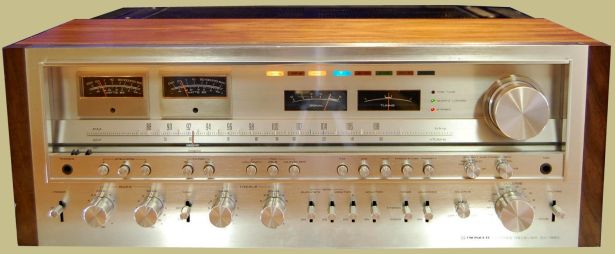
I see forum threads all the time talking about this or that receiver being a “Monster Receiver”. Many eBay sellers of vintage receivers tend to throw around the term “Monster” pretty easily as well. Just what does the Monster attribute refer to? Is it the size or weight of the receiver? Is it only top of the line receivers or those that exceed a certain power output? What makes a receiver a Monster?
Unfortunately there really is no standard definition of what a monster receiver is and probably never will be. Obviously something deemed a monster is usually very big such as a monster truck or monster wave. The same applies to receivers in that most of them that people would consider “monster” are large. Very large. I’ve seen some claim that any stereo weighing over 50 pounds should be considered a monster. But, there are a large number of receivers over that weight that wouldn’t even be considered a quality piece of audio equipment.

Many times receivers are given the monster tag because of their power output. One of the more common themes is that any receiver that puts out 120 watts or more per channel should be considered a monster. That definition would make for a fairly large list though as quite a few receivers fit that criteria. One would think that a monster receiver would definitely be the top of the line (TOTL) for the particular manufacturer at the time of its production but there are many non TOTL receivers that put out 120+ watts per channel.
My definition of a monster receiver incorporates all of the above. The stereo should be big, heavy, TOTL, and have massive power output. It was more than likely produced during the receiver wars of the mid to late 70’s and one look at it should cause you to say Wow! I wouldn’t necessarily say that it has to be the best sounding stereo or have the least distortion.
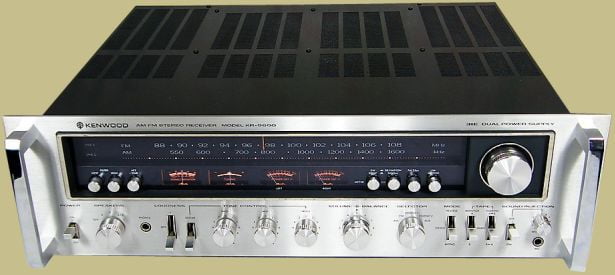
Some receivers are obvious monsters like the Pioneer SX-1980. It’s huge, heavy and has massive power output. Others in that category are the Sansui G33000, Marantz 2385, Yamaha CR-3020 and others. Other stereo’s are more in the gray area such as the MCS 3275, Pioneer SX-1010, Yamaha CR-2020, Kenwood Model Eleven and others.
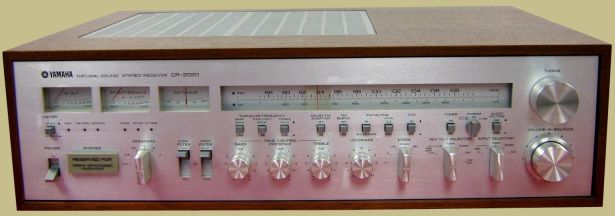
In the end there really is no formal definition of what a monster receiver is and it’s really more in the eye of the beholder. I’m going to put together a list of my top ten monster receivers soon and I’ll expect everyone to tear it apart. But, it’s like sports conversations. No one is purely right or wrong. You just make the best case you can and leave it at that.
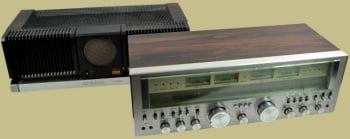
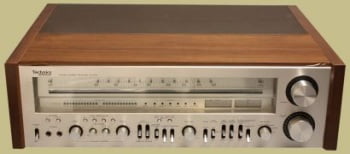
i bought mine in 1979 :) ran it 8 hrs a day , just had it rebuilt last yr
i pain 1,000 then 750$ for rebuild with issue with power switch corrected
delay increased to a couple of minutes
outstanding sound truly the top ” monster receive ‘ of it’s time
owned for 34 yrs , now good for another 30 :) use ESS rock monitors floor standing speakers . buy the top of the line and it lasts as for monster , i think over 200 watt per channel in necessary plus top specs. :)
I have a Concept 16.5 had no idea the power this thing has. Love it
I think any stereo receiver rated at 100 Watts per Channel at 8 ohms is considered a monster stereo from the 1970s into the 1980s any stereo made in that time frame with a minimum 100 watt rating is going to be big it’s going to be heavy and it’s going to sound great.
Hey there, I found a onkyo tx 4500mkll on clear for little of nothing. It was rough , but the power output and sound quality were very good , as good as my SX890.after doing some research on the onkyo line I wanted to step up. One late night i was on Ebay and there it was . An ONKYO TX6500MKII it had been there for 13 minutes. 299.00 plus 100.00 shipping . I pulled the trigger . When it finally arrived . Could not believe the condition. Looked like new old stock. I mean like it was unboxed last week. It’s only 105 wpc but its exactly what i was looking for. At 48 lbs it’s a monster in my books.
I have Carver TFM-25. Its provide 225 wpc on stereo mode into 8ohm rated speakers and 350w on mono mode. The total harmonic distortion is 0.5% and the
signal to noise ratio is 100db(!) The weight is 26 lbs.
Bob Carver made it well!!
I have a Pioneer SX 1280 and I think she is a sweet little monster at 165 watts per channel. The sound is awesome but it needs a professional recapping and upgrades to bring out its best. It cost me $1,800.00 on Ebay in 2019. I plan to sink another $1,000 into its professional recaps, upgrades and LED lighting. It is extremely heavy but well built. I went with bright white LED’s on one and golden amber bright soft white LED’s on the other.
I know Pioneer SX and Vintage receiver purists generally don’t like LED upgrades of a vintage receivers existing incandescent lights. I love the LED look and the added longevity of the LED light source when properly configured.
Ahhh mistake. My new Pioneer SX-1280 delivers 185 watts per channel which is still monster lovely. I also have a Hitachi SR-2004 which is a mind bending 200 watts per channel. I have it in the shop now for deep cleaning, LED upgrades and general restoration. On the bottom end of the power spectrum the Pioneer 1280 is indeed the much stronger monster. Now past the mid point on the volume knob and the Hitachi SR-2004 unleashes its monster true stable beautiful sound. Hitachi SR-2004 is my quiet civilized monster and my new Pioneer SX-1280 is my loud proud in your face monster. I also have a Pioneer SX-D7000 which is Pioneers first all digital Monster receiver at still respectable 120 Watts Per Channel. Finally my new baby is a Pioneer SX-950 rated at a mere 85 watts per channel rounds out my entire collection.
Hello…I once owned a Pioneer SX-1980…the BIG one. I actually got it for nothing from the recycling place in our town…this was many years ago to be sure…but it nearly killed me hauling it home and getting it up on the bench for a good cleaning. In the end I sold it on eBay for probably far less than it would go for today, but as I had no money in it, it was basically all profit. I hope that whomever it was that ended up getting it enjoyed it. If it didn’t kill *them* in the process of getting it into their stereo rack, that is. I will say, it did sound quite different from the usual 20-30 watt stuff I usually encounter in our fix-it shop. I would say the biggest difference was, not only was the weight of the 1980 massive, its sound had a sort of mass, or perhaps I’d describe it more accurately as “gravitas,” than the smaller units we so often see. It was a great sounding unit, to be sure, but really too big for any application I’d ever have personally.
have Yamaha r2000 ,pioneer a80 and a pioneer 9500 .I run klishp ,jbl and infinity speakers all picked up at garage sales and thrift stores.some needed work but well worth it.my neighbors some times bitch,so I only go concert level once in a while.ROCKON!
I didn’t get into hi-fi until the early ’80’s and of course the war was over by then so I didn’t even know about it until recently when I started noticing these ancient analog receivers selling for mucho dineros on the used market but the closest I ever came to a monster was a 200 watt Sherwood dolby surround receiver I bought in the late ’80’s. It had a big remote but I doubt it weighed 30 pounds so not even close to many of those beasts. The thing that struck me as ironic about the war was how at the time, speakers didn’t have the power handling ratings they have today
The things you see as monster receivers are nothing but a hormone tomato with outdated technology. First of all, all stereo receivers produced until 1975 are just empty boxes made for trial purposes only to exploit people’s money and eye pleasure. .. Because until 1975, all manufacturers did not take the knowledge of the outdated technology receivers they produced. All the devices produced until this date are garbage. The thing called sound wars is just a fairy tale. The most powerful ones were the transistors… The Pioneer sx1980 and sx1250, which were seen as the most powerful, had the same transformer… The only difference was more and thicker aluminum front panel and a pair of extra power vu-meters… Total waste of metal.. These devices are inherently very they relied on large capacitors and operated with extreme heat. they needed huge aluminum cooling radiators so that they wouldn’t explode due to the heat… And the reason why these devices are so heavy is not that they actually have good quality and powerful sound, but that they are so heavy due to their structure. Pill transistors are not heat resistant and can even start a fire. ..Such huge power supplies, such huge heatsinks and capacitors, and a very solid and thick metal structure to hold them together… All this was just to get 100 watts of sound per channel… Kenwood from 1982-83 High-tech devices with Silicon Transistors such as the kr-1000 Galaxy Commander began to be produced. It needs an extremely large and heavy cooling radiator, which has more than 200 Watts per channel, does not lean its back on capacitors, and is not affected because it has silicon transistors even at very high temperatures. Kenwood kr-1000 is the Most Powerful Receiver of All time without… It is much more powerful than all the devices seen as monsters and weighs only 17 kilograms… That’s the technology I think…